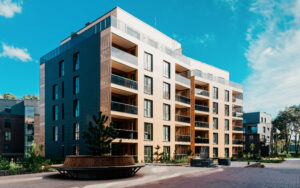And if Damages, how are those Damages Calculated?
 In what has been described as a landmark decision in a rights of light case, the High Court has given helpful guidance to developers on how it will exercise its discretion on whether to grant an injunction and if not, how it will assess damages.
In what has been described as a landmark decision in a rights of light case, the High Court has given helpful guidance to developers on how it will exercise its discretion on whether to grant an injunction and if not, how it will assess damages.
The Claimants, the owners of two residential flats, brought a claim in nuisance against a developer for interference with their right to light caused by a neighbouring 19 storey office building. The flats were worth between £900,000 to £1.5m.
The Claimants bought their flats in 2021 and the office building was completed in December 2022. They applied for an injunction requiring the developer to demolish substantial parts of the office building; alternatively, damages assessed on a negotiating basis or for diminution in value of their flats caused by the nuisance. The cost to the developer of implementing the injunction sought by the Claimants which would require them to demolish parts of the office building would be in the region of £250m.
The Court had to balance the harm to the Claimants caused by the loss of light against the harm to the developer’s legitimate interests. The judge made it clear that arguments of waste of money or harm would not automatically entitle the developer to defend a claim for an injunction. The natural remedy where a nuisance was continuing was an injunction and the burden of proof rested on the developer to show why an injunction should not be granted.
In this case, the judge decided that the harm to the developer and its tenants would be disproportionate to the harm caused to the Claimants by the interference with their light. He also found that the developer had not acted in an unfair or exploitative manner in the way it dealt with rights to light issues.
Another important factor in deciding to award damages rather than an injunction was that the developer had settled a number of claims from other flat owners who had also suffered a loss of light. This indicated that damages were an adequate remedy.
The judge awarded damages calculated on a negotiating basis. This is based on the assumption that the Claimants were willing to sell their rights but only at a proper price and that the developer was willing to pay a proper price but not a ransom.
The parties agreed a date in August 2019 should apply to the hypothetical negotiation as this was shortly before the construction of the office block began.
The judge assessed that in this hypothetical negotiation the developer would pay 12.5% of its perceived gain into a compensation pot. He then apportioned this between the Claimants in shares amounting to £725,000 for one and £525,000 for the other.
He then made a further assessment to consider whether these sums felt right. He considered that they were too high in the context of the value of the two flats and reduced the awards to £500,000 and £350,000 respectively. These sums reflected a fair proportion of the development value attributable to the surrendered right of light in the hypothetical negotiation.
The damages awards were much lower than the sums sought by the Claimants but significantly higher than the diminution in value of their flats (£60,000 and £20,000 respectively) caused by the loss of light.
The case is an important illustration of how damages may be assessed in real property disputes and not just rights to light ones. It is no longer appropriate to apply a one third share of a developer’s gain as an assumed end point for negotiation.
Cooper v Ludgate House Limited; Powell v Ludgate House Limited [2025] EWHC 1724 (Ch)


